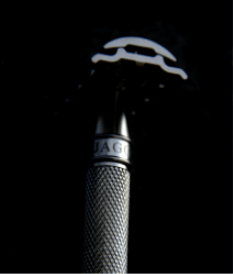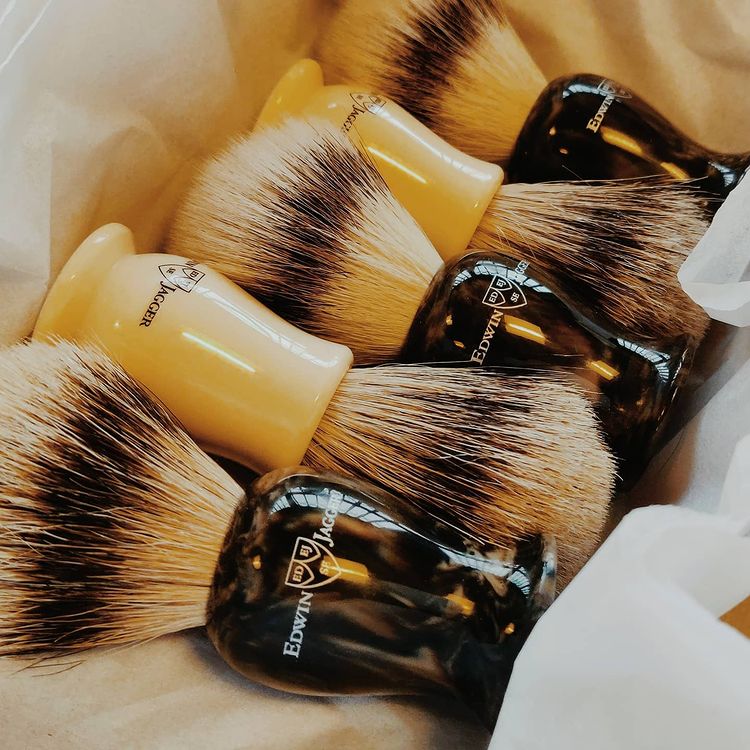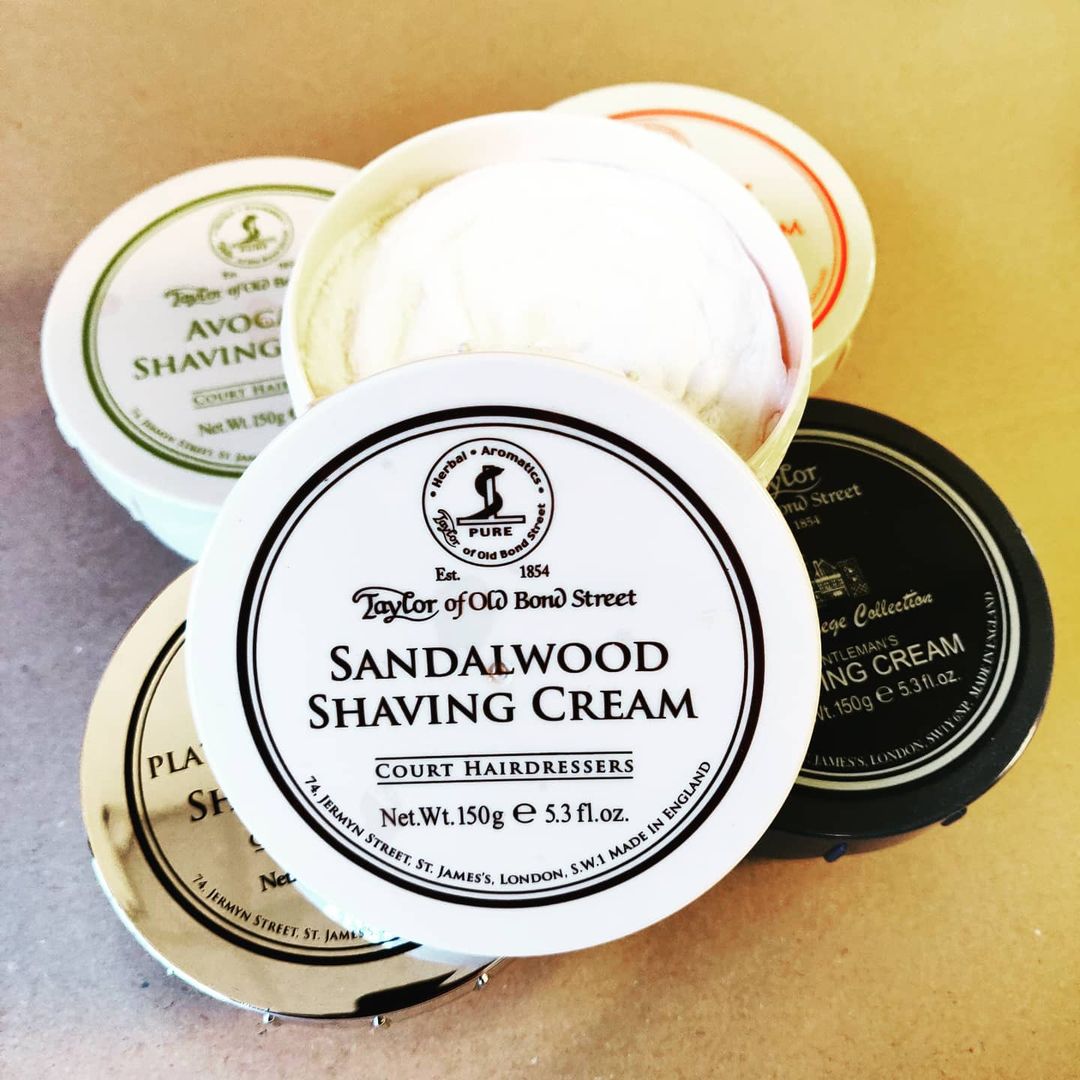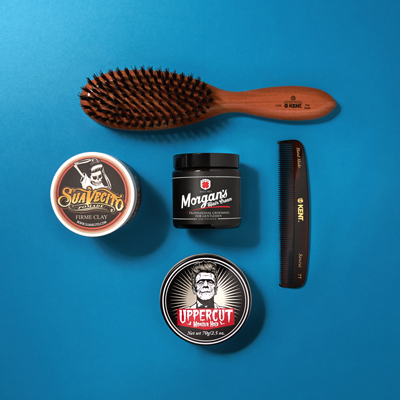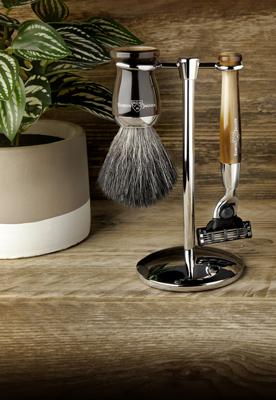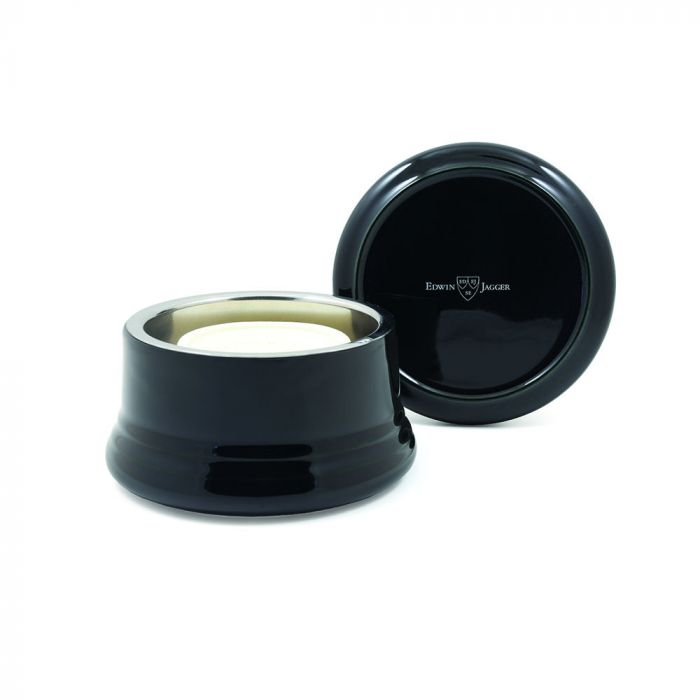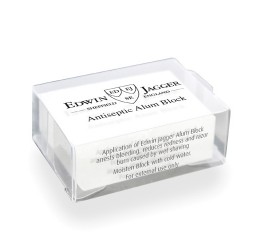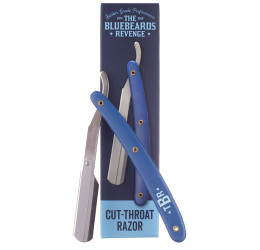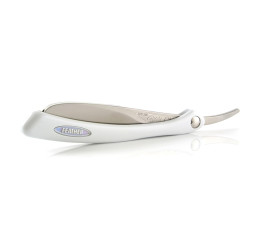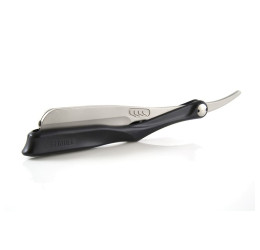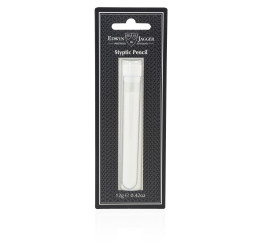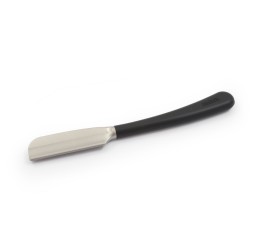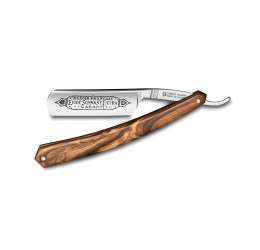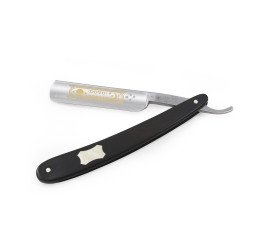How to Shave With a Cut Throat Razor
Cut-throat razors—also known by the far less menacing name of straight razors—can seem like an intimidating tool of choice for shaving. Rather than the more common handle and contained blade structure, a straight razor resembles a flick knife with one singular sharp blade that is used to glide across the skin and achieve an incredibly close shave.
Straight razors have been used over the centuries as a way for men to tame their beards. They have seen a resurgence in recent decades with more men opting for the traditional approach and steering away from the plastic and disposable options we see on the supermarket shelves. Not only are cut-throat razors far better for the environment, but they are also kind to your skin too. The use of a singular blade means your skin is subject to less pressure and friction, reducing soreness and damage. The design of a cut-throat razor also allows you to angle the blade into hard-to-reach places without difficulty, giving you cleaner, more uniform results overall.
How to use a cut-throat razor
Cut-throat razors are usually wielded by professional barbers or experienced wet shavers and are less commonly seen in the everyday male grooming kit. There’s a good reason for this — they’re hard to use at first. You will need to have plenty of time, patience and dedication to learn the technique and perfect your shaving angles as you move away from the safety razors or disposable razors.
Preparation
You must be prepared to commit significantly more time to your morning shave when using a cut-throat razor instead of a safety razor or electric razor. Why? Because you will need to learn and adapt to a whole new shaving technique, which, if you haven’t used a straight razor before, can take a few trials (and errors) to get right. You need to ensure your razor is fully honed and stropped before first use — almost all straight razors will come ready honed but will still benefit from a strop before the first use.
Before you put the blade of your cut-throat razor anywhere near your skin, you should carry out your usual pre-shave rituals. Soak your skin with a hot flannel or jump in a hot shower before shaving to open your pores and soften the hair as much as possible. Then, apply an effective pre-shave lotion or cream to mitigate any potential irritation and damage during shaving. Finally, lather up your shaving cream or soap using a high-quality shaving brush and apply it to your skin. Make sure that your skin is evenly coated and provides plenty of cushion for the blade to glide across.
Angles
This next step takes a good amount of practice to nail down and involves a considerable amount of concentration. You simply cannot rush a straight razor shaving routine as you can end up leaving cuts or razor burn on your face due to accidentally shaving over the same area multiple times or going in at the wrong angle. Aim to hold your cut-throat razor at a 30-degree angle to allow the blade to smoothly cut through your hairs. This will prevent the blade from tearing the hairs which can happen if the angle is too flat or cutting your skin through holding it too upright. Practice makes perfect and it is normal for there to be some trial and error in your first few shaves. Once you’ve nailed your angles, the technique will start to build naturally and you will quickly realise how effective shaving with a cut-throat razor can be.
Tight skin
Before you start stroking the blade across the skin, you will need to pull the skin so it is taut. This way, you can move the blade smoothly over the surface of your skin without it dragging, pulling or cutting. As you shave the different areas of the face, you will need to adjust your hold accordingly and pull the skin to make the surface tight and ready for the blade. Naturally, some areas of the face are a lot more challenging to shave than others. When approaching areas like the lips, nose and chin, the same technique applies. Keep a firm grip on the skin when shaving to prevent friction burn or a cut that can take days to heal.
Minimal strokes
Another important aspect of shaving with a cut-throat razor is to use minimal strokes. Of course, this will take time to get right, but the fewer strokes you take to achieve a close shave, the less stress on your skin and the better the end result. Always start from your sideburns and work downwards using short strokes, rinsing your blade inbetween movements to avoid a build-up of hair or shaving cream on the blade. By shaving downwards in one direction to start with, you can ensure you’re applying even pressure across your face and more easily see which areas have been covered. Once you have shaved in downwards motions across your cheeks, lip area, chin and neck, you can decide whether you need to go back for a second or third pass — this time across or against the grain of your hair. For those who want to end up with the closest shave possible, re-lathering your skin and shaving it once or twice more is the best way to achieve this.
Aftercare
If you’re happy with the look and feel of your cut-throat shave, you can continue with your post-shave care as normal. It’s best to hold a cold flannel on your skin or splash your face with cold water to close your pores. Then, apply plenty of moisturiser or post-shave cream to give your skin the treatment it deserves. Try to avoid rubbing your skin when applying post-shave products as this can lead to irritation. Instead, gently massage and pat products onto the surface of your skin so they can be absorbed gradually. Remember that catching yourself is an inevitable part of the learning process and any nicks and cuts can be easily remedied with an alum block or styptic pencil. These medicinal wonders from Edwin Jagger arrest any bleeding, accelerate healing and leave your face looking clear and healthy.
Hopefully, you feel better about wielding a cut-throat razor and trying a more traditional method of shaving. Straight razors may look threatening, but they can actually be more gentle on the skin than other products once you have nailed your shaving technique. They are certainly unbeatable in terms of coolness! Take a look at The English Shaving Company’s wide range of straight razors and order yours today to get practising. Our team is on hand to answer any queries you might have about the best razor for your needs and routine.
Which straight razor should I buy?
The English Shaving Company offers an extensive range of cut-throat razors from some of the world’s most celebrated razor companies. Depending on your level of experience and confidence with using a cut-throat razor, you may want to start with a milder or less expensive safety razor, such as the following models:
As our most moderately priced cut-throat razor, The Bluebeards Revenge Cut Throat Razor is the ideal entry point for most traditional shaving enthusiasts. One unique feature of this razor is the replaceable blade, which is perfect for those who want the traditional and manly feel of a straight razor without having to worry about honing and stropping a reusable blade. It is compatible with all standard double edge razor blades and delivers an immensely close shave.
For a different design, try the Feather Artist Club SS (ACS-NB) Japanese Shavette Razor. Made from high-grade stainless steel, the rounded tip and moderate blade exposure ensure a softer and smoother shave, perfect for less experienced shavers. The spring-loaded one-touch mechanism in the blade head makes cleaning a breeze, easing you into the routine of properly caring for your cut-throat razor.
If you have some prior experience shaving with straight razors, you could brave the incredible Thiers Issard Singing Hollowed 1196 Olivewood 6/8 Straight Razor. The 100% carbon steel blade pairs perfectly with the beautiful olivewood handle for a beautiful design that matches its pristine performance. Even though this razor is on the more aggressive end, anti-slip knurling on the underside of the tang makes this razor particularly safe, eliminating any fears of this being a precarious way to shave.



